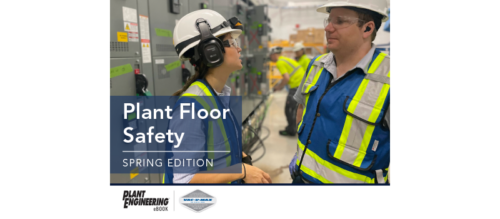Six problems to avoid with preventive maintenance
Establishing a preventive maintenance program is one of the best things you can do for your business. Understand six problems to avoid in any preventive maintenance program.
Establishing a preventive maintenance program is one of the best things you can do for your business. When you have such a program operating at your facility, you can expect better conservation of assets, along with reduced downtime and fewer major repairs. Also, preventive maintenance can help to improve the quality conditions and safety for everyone at your facility.
There is no question that preventive maintenance is beneficial, but there are many associated problems with such a program. Many of these issues are easily avoidable, provided you watch out for these six problems that could put a kink in your program.
Six problems to avoid in any preventive maintenance program
1. Lack of Data: Not only are you able to see what issues are about to occur, but you are also able to capture a significant amount of data that provides valuable insight into those problems. One of the mistakes that many businesses make is not using that data to the fullest. It’s fed into a maintenance program to help measure performance and see both the strengths and weaknesses at your facility.
2. Setting Intervals: Having an ongoing preventive maintenance program in place is always a good idea, but if you allow too much time to go between preventive maintenance tasks, equipment could easily get damaged. It may end up costing you more in repairs as a result of not setting the proper standard intervals for the maintenance task.
3. Lack of Direction: To have your preventive maintenance program running as smoothly as possible, having everybody know their role is crucial. They will need to know what to do, when to do it, and how to do it. Be as specific as you possibly can, even attaching drawings if necessary to give the proper guidance.
4. Skipping Equipment: In many facilities, the equipment may be separate from each other, but it depends on each other as well. If you leave out certain key pieces of equipment in your preventive maintenance program, it could result in downtime for the entire facility.
5. No feedback: Your maintenance technician should feel free to provide feedback from his inspection. This information collection helps refine the process.
6. Not Understanding the Principles: One of the common issues that occur in a preventive maintenance program is confusion regarding the purpose of the program. Preventive maintenance is just as it sounds; it prevents problems from happening in the first place by identifying potential problems before becoming a serious issue. Failure-finding, on the other hand, is identifying problems after they already exist and then fixing them.
When a preventive maintenance program is established and streamlined, it works well for the entire facility. The program puts you in a position to spot any potential problems before they become an expensive equipment repair or an even more costly plant shutdown. It is far easier to repair equipment on your terms before a catastrophic failure occurs.
– David Manney is a marketing administrator at L&S Electric. This article originally appeared on L&S Electric Watts New Blog. L&S Electric Inc. is a CFE Media content partner.
Original content can be found at www.lselectric.com.
Do you have experience and expertise with the topics mentioned in this content? You should consider contributing to our CFE Media editorial team and getting the recognition you and your company deserve. Click here to start this process.


